TRANSFORMATIONAL IMAGEMAKING
TRANSFORMATIONAL IMAGEMAKING
Handmade Photography Since 1960
 ROBERT HIRSCH
ROBERT HIRSCH 

First published 2014
by Focal Press
70 Blanchard Road, Suite 402, Burlington, MA 01803
and by Focal Press
2 Park Square, Milton Park, Abingdon, Oxon OX14 4RN
Focal Press is an imprint of the Taylor & Francis Group, an informa business
2014 Robert Hirsch
The right of Robert Hirsch to be identified as author of this work has been asserted by him in accordance with sections 77 and 78 of the Copyright, Designs and Patents Act 1988.
All rights reserved. No part of this book may be reprinted or reproduced or utilised in any form or by any electronic, mechanical, or other means, now known or hereafter invented, including photocopying and recording, or in any information storage or retrieval system, without permission in writing from the publishers.
Notices
Knowledge and best practice in this field are constantly changing. As new research and experience broaden our understanding, changes in research methods, professional practices, or medical treatment may become necessary.
Practitioners and researchers must always rely on their own experience and knowledge in evaluating and using any information, methods, compounds, or experiments described herein. In using such information or methods they should be mindful of their own safety and the safety of others, including parties for whom they have a professional responsibility.
Product or corporate names may be trademarks or registered trademarks, and are used only for identification and explanation without intent to infringe.
Library of Congress Cataloging in Publication Data
Hirsch, Robert, 1949
Transformational imagemaking : handmade photography since 1960 / Robert Hirsch.
pages cm
Includes bibliographical references and index.
1. Photography, HandworkedHistory. 2. PhotographyRetouchingHistory. 3. PhotographersUnited StatesInterviews. 4. Photographic criticism. I. Title.
TR485.H57 2014
770dc23
2013030314
ISBN: 978-0-415-81026-5 (pbk)
ISBN: 978-1-315-81893-1 (ebk)
Contents


Thomas Barrow
Luke Batten
Wayne Martin Belger
Stephen Berkman
Matthew Brandt
Peter Bunnell
Dan Burkholder
Darryl Curran
Binh Danh
Rick Dingus
Dan Estabrook
Robert W. Fichter
Robert Flynt
Judith Golden
Betty Hahn
Robert Heinecken
Catherine Jansen
Harold Jones
Tatana Kellner
Les Krims
William Larson
Dinh Q. L
David Lebe
Martha Madigan
Curtis Mann
Stephen Marc
Scott McCarney
Chris McCaw
John Metoyer
Duane Michals
Vik Muniz
Joyce Neimanas
Bea Nettles
Ted Orland
Mark Osterman
Tom Persinger
Douglas D. Prince
Holly Roberts
Clarissa T. Sligh
Keith A. Smith
Laurie Snyder
Jerry Spagnoli
Doug Starn
Mike Starn
Brian Taylor
Maggie Taylor
Jerry N. Uelsmann
Melanie Walker
Todd Walker
Joel-Peter Witkin
John Wood
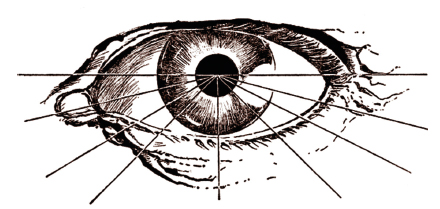
Martinez. Vanishing Point, (altered detail) 1959. Digital file. Variable dimensions. Courtesy of The Project Gutenberg EBook of Vanishing Point, by C.C. Beck.
The photographers vision convinces us to the degree that the photographer hides his hand.
JOHN SZARKOWSKI
The Photographers Eye
We constantly tend to misuse or misunderstand the term reality in relation to photographs. The photograph itself is the only thing that is real.
ROBERT HEINECKEN
ASSEMBLED FROM A MAKERS PERSPECTIVE , Transformational Imagemaking: Handmade Photography Since 1960 examines, explains, and advocates for a curated group of American photography-based artists who have worked to expand the window-on-the-world and fine print practices of traditional photography. In making no attempt to hide its hand, this diverse group of curious experimentalists challenges and subverts these conventional practices to play off photographys believability factor by utilizing the photographic medium as a springboard to a physical, expressionist interpretation of subject that enlarges the mediums lexicon. Conceptually, these artists propel the mediums evolution by materially realizing the pictures that otherwise exist only in their minds eye, reminding us that all photographs are constructions. Their innovative synthesis of the empirical and the imaginative produces pictures that are tactile in nature and offer a more resonant representation than an ostensibly dispassionate topographic view. They share a corporal impulse to convey intuitively the enigmas of life that reside beyond the reaches of standard photographic language. In turn, their works allow viewers to get as close to the making as to what is made. These artists strive to recompose the world and make it personal by creating in-depth experiences that interpret their subject matter differently from previously recognized views of a similar topic. In doing so, their methodologies broaden how a photograph is perceived and interpreted by expanding the established artistic and societal preconceptions of how a photographic subject is supposed to look and what is deemed to be truthful. Hence, their transformational picturemaking is an energetic act of authentic assertion, control, and organization over their topic, which extends and transforms their subject beyond boundaries of what is considered to be photographic reality.
The artists presented here employ a wide range of photographic methods to visualize their thinking. However, their work does not approach process as a repeatable recipe, but as an idiosyncratic, heightened means to an end. In a McLuhanesque material sense, the medium is a key component in transmitting their message. Marshall McLuhans seminal work, Understanding Media (1964), features a chapter called The Medium Is the Message, in which he stressed how McLuhans new-media point of view was much more in line with that of the makers presented here, such as Thomas Barrow, Robert W. Fichter, Robert Heinecken, and Joyce Neimanas, and others, especially West Coast photographers, who were not following in the aesthetic tropes of Edward Weston and Ansel Adams and who certainly had no interest in Szarkowskis optic-centric corral. At a time when American culture was simultaneously imploding and exploding, McLuhan offered a much larger field of play for these artists to explore. Like McLuhan, the artists featured in this text grew up with film and television, mediums whose inescapable influence opened the new branch of media studies to examine the content, history, and effects of various media, especially mass media, and later digital media comprising both Internet and mobile mass communications.
Transformational Imagemaking
Next page
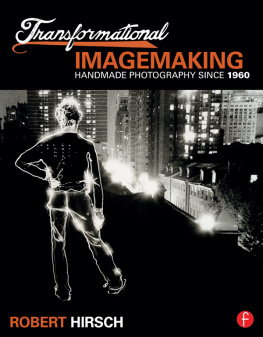

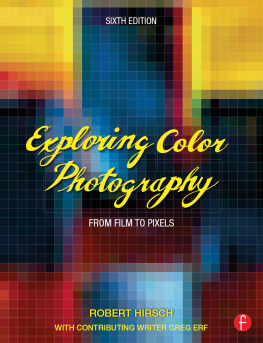
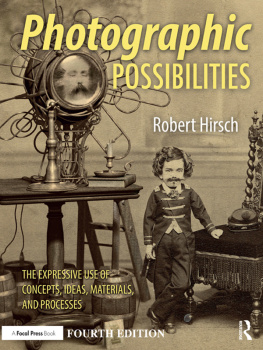
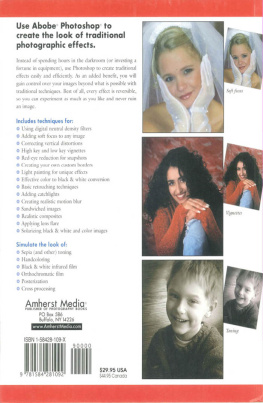
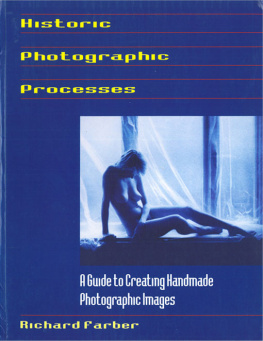
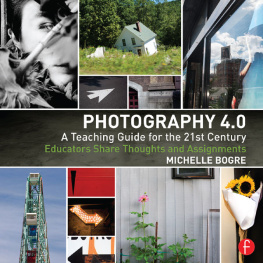

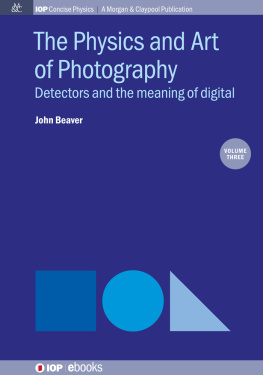

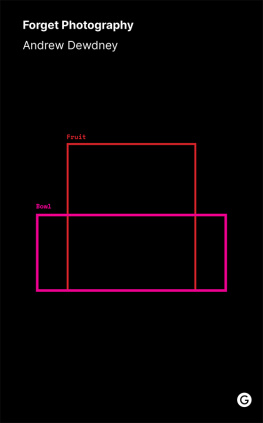
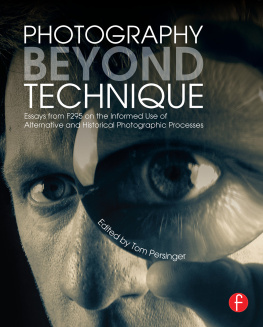
 ROBERT HIRSCH
ROBERT HIRSCH 


